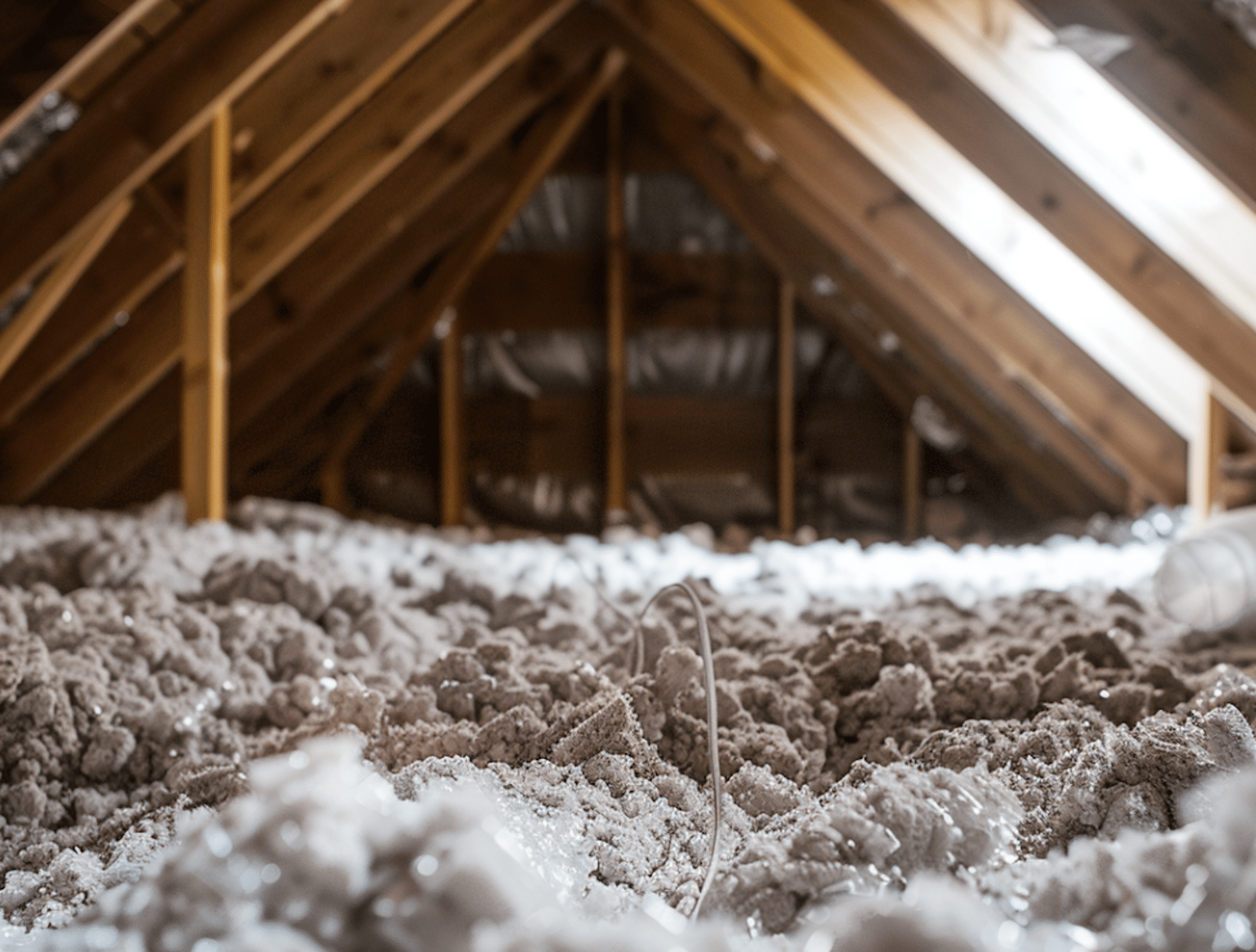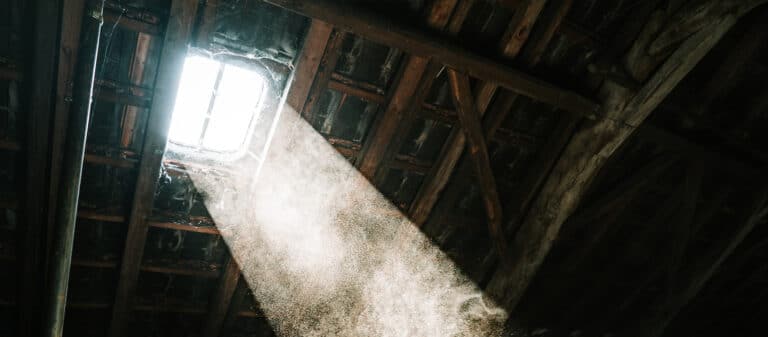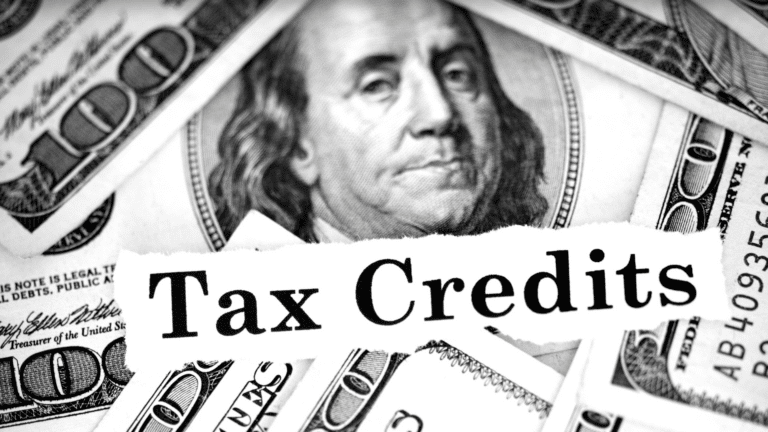Blown-in cellulose is a safe, economical alternative to fiberglass and spray foam insulation, with the added benefit of being environmentally sustainable.
One of the most common misconceptions about cellulose is its flammability, because it is made from recycled materials like paper. Cellulose is treated with fire-retardant chemicals, making it perfectly safe for homes, and cellulose also poses no respiratory risks to people who breathe it in.
Cellulose also performs well in the frigid climate of Northeast Pennsylvania, supplying the necessary R-value to meet EnergyStar requirements and protect critical parts of your home when installed properly.
This article will tackle myths surrounding the safety and efficacy of cellulose insulation so you can determine if it’s right for your home.
What Is Blown-In Cellulose?
Blown-in cellulose insulation is made from recycled paper fibers that are treated with fire retardants. These fibers are finely shredded and treated with borates and other materials to resist insects and mold.
The result is a dense, fluffy material that effectively traps air and provides excellent insulation for homes.
Like blown-in fiberglass, cellulose can be installed in tight cavities, including walls and attics, making it one of the best types of insulation for walls and attics.
Is Blown-In Insulation Safe?
Cellulose insulation is completely safe to breathe in and is treated with fire-retardant chemicals to make it flame-resistant.
All cellulose insulation is tested to the following standards to ensure its safe against fires:
- Flame Spread Test (ASTM E84): Measures how quickly flames travel across the material. Cellulose consistently ranks in Class A or Class 1 categories.
- Smoldering Combustion Test (ASTM C739): Ensures the insulation does not smolder or reignite.
- Burning Brand Test: Simulates embers landing on attic insulation—cellulose performs extremely well due to borate treatment.
Additionally, borates are added, which are naturally flame-resistant. For this reason, cellulose often performs better than fiberglass in controlled testing (fiberglass can melt without igniting, but paper-coated facing on batts can burn).
Borates are also pest and mold-resistant, helping cellulose last longer than most other types of insulation.
Finally, lab testing has concluded that cellulose insulation is safe to breathe in as less than 0.1% are repairable and have not shown to cause lower respiratory irritation in tests.
Cellulose Is Safe for the Environment
Cellulose insulation is widely regarded as one of the greenest insulation materials available, thanks to its high recycled content and low environmental impact. Made from up to 85% recycled newspaper, cardboard, and paper fiber, cellulose helps reduce landfill waste and gives new life to materials that would otherwise be discarded.
The production process also requires significantly less energy compared to fiberglass or spray foam, resulting in a much smaller carbon footprint.At the end of its lifespan, cellulose can be removed and recycled again, making it a truly sustainable choice for eco-conscious homeowners.
How Does Cellulose Compare to Other Types of Insulation?
When compared to other popular insulation materials, cellulose offers similar performance at a great price point.
Insulation Type | R-Value per Inch | Air Sealing | Moisture Protection | Cost | Best Use Cases |
Cellulose | 3.5 | Good (dense pack) | High (borate treated) | Low | Walls, attics, older homes |
Fiberglass Batts | 2.9–3.8 | Poor | Moderate | Low | New construction, budget installs |
Blown-In Fiberglass | 2.2–2.9 | Moderate | Moderate | Low–Medium | Attics, open cavities |
Open-Cell Foam | 3.5–3.9 | Good | Low | High | Interior walls, soundproofing |
Closed-Cell Foam | 6–7 | Excellent | Excellent | Highest | Attics, basements, rim joists |
Why cellulose stands out:
- Better cavity coverage than fiberglass
- More eco-friendly than foam products
- Higher soundproofing than either fiberglass or foam
- Significantly more affordable than spray foam
To get the most out of cellulose insulation, it’s important to seek out professional installation as this will help prevent issues related to settling or uneven coverage.
How Is Blown-In Cellulose Installed?
Cellulose insulation is installed with a specialized blower machine operated by a professional. For existing homes, we will drill a small hole in the exterior wall, underneath the siding, to provide ready access to the wall cavity.
Once inside, the machine will fill the cavity with a dense bundle of cellulose, providing a thermal barrier between the outside and inside.
Thanks to the product’s density, it can also be installed into attic rafters without fear of the insulation material falling out or coming loose.
Common Misconceptions of Blown-In Cellulose:
Despite its safety and numerous benefits, blown-in cellulose insulation is sometimes subject to misconceptions. This has hindered its popularity despite being completely safe and practical. Here are a few common myths debunked:
- Mold Growth: Boric acid is added to cellulose mixtures to prevent mold growth. Boric acid is considered an organic compound that also fights off insects.
- Pest Magnet: Since cellulose is made from organic and recycled materials, many people think this will attract bugs. However, borates are added to help prevent insects.
- Settling and Compression: Like any insulation material, cellulose insulation may settle slightly over time, but manufacturers calculate this into their formula. Therefore, the R-value you think you’re getting from cellulose is actually a conservative estimate of its actual thermal efficiency.
- Health Concerns: Some people express concerns about airborne particles during installation. However, installers typically wear protective gear, and the settling process quickly reduces any airborne particles to negligible levels. Once installed, cellulose insulation poses no health risks to occupants.
Benefits of Blown-In Cellulose: Is It Right for Me?
Overall, blown-in cellulose is a versatile, safe, and effective insulation material for older and newer homes in NEPA looking to improve their energy efficiency.
- Excellent Thermal Performance: On average, cellulose provides an R-value of R-3.5 per inch, making it more efficient than some forms of fiberglass batt or open-cell spray foam.
- Sound Dampening: The dense fibers of cellulose insulation also provide excellent soundproofing, reducing noise transmission between rooms.
- Environmentally Friendly: Made from recycled materials, cellulose insulation is a sustainable choice that helps reduce landfill waste and energy consumption.
- Resistant to Insects and Mold: Cellulose is highly moisture-resistant and treated with borates to fend off insects and mold. Cellulose is also good at protecting residents from seasonal allergies outside.
- Cost-Effective: Compared to products like spray foam or fiberglass, cellulose is often viewed as a more affordable option.
Be sure to partner with a professional offering the best value for your investment when installing cellulose insulation.
This could be the difference between long-lasting and efficient insulation and insulation prone to chronic issues.
FAQs: Is Cellulose Insulation Safe?
Is cellulose insulation safe for homes with pets?
Yes, cellulose insulation is safe for homes with pets. The fire retardants and borates used in cellulose insulation are non-toxic and pose no harm to pets.
Can blown-in cellulose insulation be installed within existing walls?
Yes, blown-in cellulose insulation can be installed in existing walls by drilling small holes and blowing the insulation into the cavities. In fact, blown-in insulation is designed for that exact purpose.
How long does blown-in cellulose insulation last?
When properly installed and maintained, blown-in cellulose insulation can last for the home’s life.
Is cellulose insulation environmentally friendly?
Yes, cellulose insulation is environmentally friendly as it is made from recycled materials and can be recycled at the end of its lifespan.
Does cellulose insulation pose any fire risks?
No. Modern cellulose is treated with borate-based fire retardants that make it flame-resistant. It must pass rigorous fire safety tests before being approved for residential use.
Will cellulose insulation attract moisture or cause mold?
Cellulose is treated with borates, which actively resist mold growth. When properly installed with adequate air sealing and ventilation, cellulose performs exceptionally well in moist or humid environments.
Is cellulose insulation safe for people with allergies?
Yes. Once installed, cellulose produces no airborne fibers or respiratory irritants. Its dense structure can also help reduce the transmission of dust, pollen, and outdoor allergens into living spaces.
Can cellulose insulation help reduce energy bills?
Absolutely. Dense-pack cellulose significantly reduces air leakage, which is one of the biggest contributors to heat loss. Most homeowners see noticeable reductions in heating and cooling costs.
Does cellulose insulation settle over time?
Cellulose may settle slightly, but installers account for this during installation. The final R-value listed on the product already factors in expected settling, so performance remains consistent.











